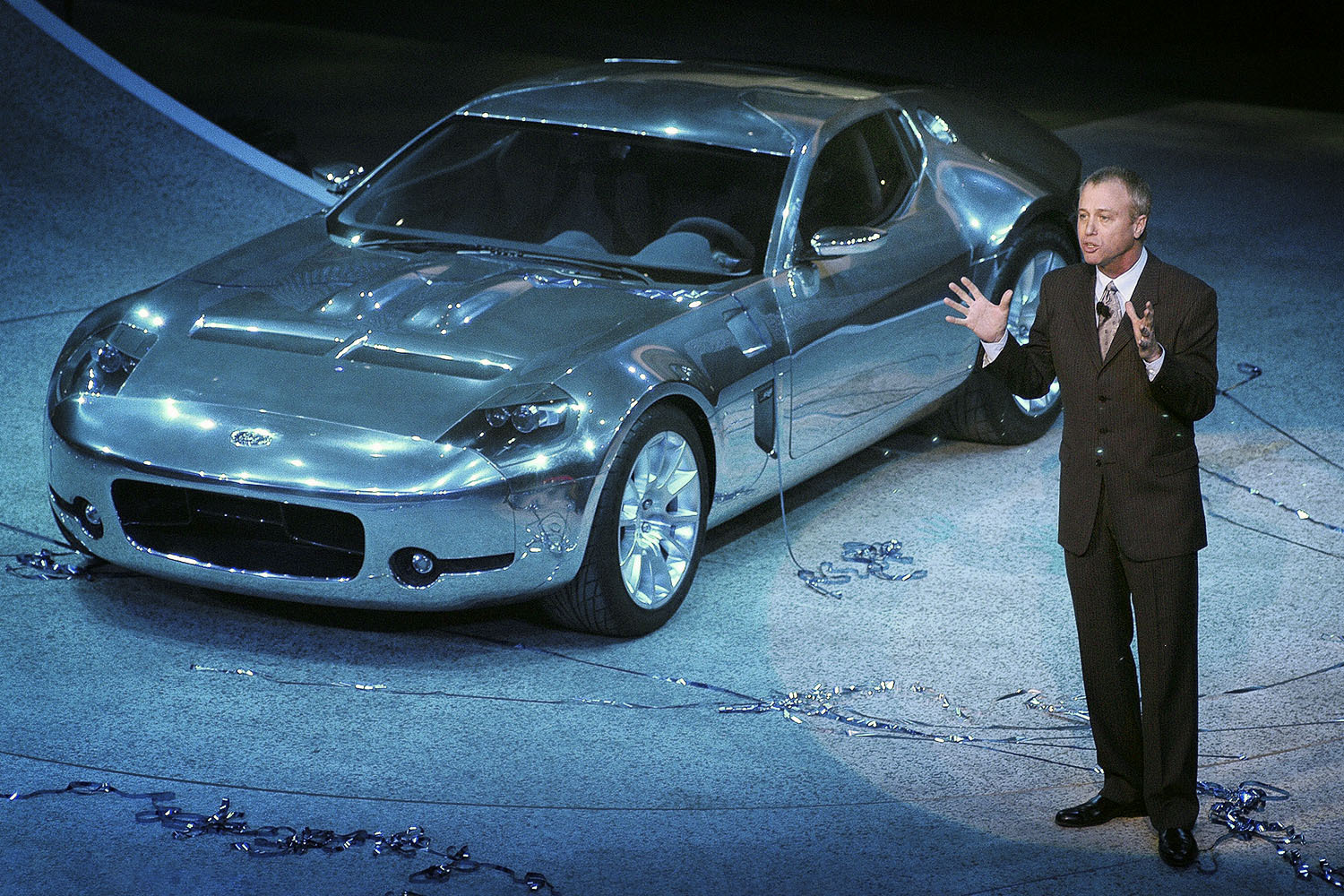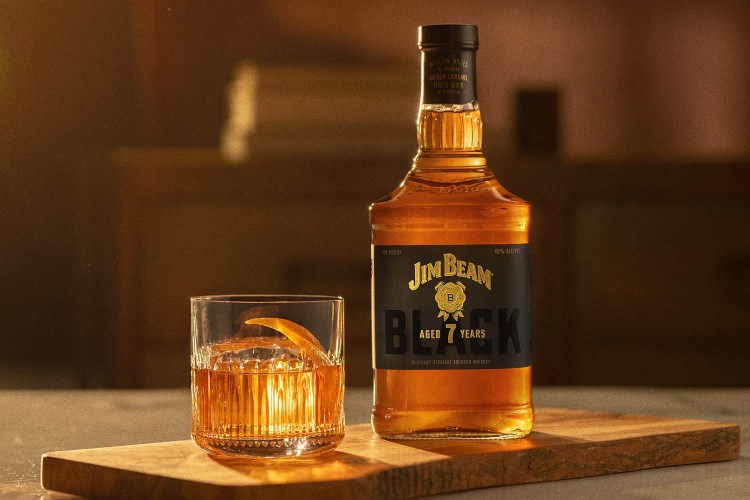If the artist George Stubbs could build a career almost entirely on painting horses in the 18th century, perhaps it’s not such a strange idea that, in the 20th century and beyond, Harold Cleworth could do the same painting cars. Indeed, Cleworth could well be dubbed the Michelangelo of the motor.
Born in Manchester, U.K., but based in Venice Beach for most of his working life — where he’s busy building a new gallery space for his works — Cleworth began his working life as a graphic designer. He worked for the seminal ‘60s/‘70s record label Decca, designing album covers for the likes of the Rolling Stones and the Who, something he’s quick to casually dismiss.
“Graphically, album covers weren’t very interesting or artistic then — just a photo and bit of type on them, not the artworks they sometimes are today,” Cleworth tells InsideHook. He then illustrated for a women’s magazine, “which meant I had to read all these love stories, for god’s sake, which were really quite horrible.” But he always loved cars. He recalls hitchhiking as a teenager to the Earls Court Motor Show in London each year to collect pamphlets. He says that his father, a bus driver, gave him “the appreciation for the aesthetics of machinery,” but he always had the ambition to paint for a living.
“Yet painting cars even then seemed like an absurd idea. Nobody was doing it then, at least with a contemporary look, and it was rough for me for a couple of years — but then I’ve been doing it for 40 years now so it’s worked out quite well,” he laughs. “It was a painting of a Mercedes Gullwing that really made my name. It was then that I realized that in cars I had discovered my muse.”
Cleworth’s paintings first became known for their realist style — the car occasionally set against a plain white background — sometimes so realistic that telling them apart from a photograph was hard. Later, he brought cars alive through a more impressionistic style.
“A painting has to go beyond a photograph, to bring some special thing to the portrayal of the car, a little exaggeration of the realism,” Cleworth explains. “Frankly it bothered me from the start that people thought the Gullwing was a photograph. If it doesn’t feel like a painting, what can I be saying? So after that I threw away the airbrush and got more painterly. It’s often about the reflections. You can see whole stories in the reflections of cars: trees, buildings, sky. A black car is actually many, many shades of black that become a mirror. Reflections give a car painting life.”
It may seem odd that the painting of cars even exists as a specialty. Yet, Cleworth’s work helped inspire the creation of the Automotive Fine Arts Society in 1983, an organization he also directly had a hand in founding. He has painted many a picture to promote some of the country’s most prestigious automotive events, the Los Angeles Motor Show and Pebble Beach among them. The first work he did for the latter show had to feature a vintage Alfa Romeo that, unfortunately for the artist, was still in England in boxes. Cleworth painted it from photos of various parts of the car sent to him by the organizers. Once the piece was finished, they asked if he could turn the car “a little bit to the right.”
There are also many well-heeled men out there — it’s nearly always a man, says Cleworth — who want to commission paintings of their cars. One client, for example, wanted a painting of his uber-rare Bugatti Atlantic before selling the car to Ralph Lauren, who proceeded to paint it black. “Scandalous,” says Cleworth.
“I really had no idea there would be a market for these paintings, though graphically they can be very pleasing and you don’t have to own the car to want what is a contemporary modern painting,” he says. “But when people started calling me up and saying ‘would you paint my automobile?’ you realize the passion that some men have for their cars outdoes that they have for their family. ‘Don’t paint my wife, paint my car!’ A man’s hobby is his passion. He does his job, possibly not terribly happy about it, comes home and goes straight to the garage to start fixing up his car. In doing so you develop a bond with that vehicle. You get to know it. I’ve had several classic cars myself and know the thrilling feeling of searching America for one little part you need.”
Painting cars as he does is, as Cleworth reckons, something he could only do on the West Coast of the U.S., thanks to the inspirational colors of the sky, flora, fauna and architecture. “London’s in black and white and California is in glorious technicolor,” as he puts it. “I think I saw blue skies for the first time in my life here. Do I get bored of those? Hell no!” More recent works have included the local architecture as a backdrop for the cars. But it’s not just the climate that’s been important; Cleworth has strong leanings towards American automobiles and car culture.
“It was seeing American cars of the 1950s when I moved here that really convinced me I could do this for a living. They just smacked me in the face: the colors, the over-the-top designs. They make you smile,” he recalls. “I first saw a silver ‘59 Cadillac Eldorado Biarritz convertible at the Earls Court show and it blew me away. It was like something from another planet, though I think it horrified a lot of English people because it was considered such bad taste next to your Rolls-Royces and Jaguars. But I fell in love with it, and saw the same car on the street when I moved here. The favorite car I ever owned here was a turquoise ‘58 [Chrysler] Imperial. Back in England I had a Mini and you had to crawl into it. The Imperial was like driving your living room around.”
Cleworth has a great deal of respect for the passion embodied in local Latino low-rider culture, too. “Their workmanship is fantastic, though one time with the hydraulics I thought I was going to throw up,” he chuckles. But that’s about as modern as he gets.
That leaves his paintings with a certain mood of nostalgia, a look back perhaps on what some, and certainly Cleworth, think of as the golden age of car design. A few supercars aside — “the occasional Lamborghini, which may become a classic in future years,” he suggests — he’s not so keen on modern automobiles. None feature in his paintings. “Definitely nothing like a Tesla,” he says with mock horror, though he accepts that market needs and safety regulations mean the automotive design flourishes of yore are likely no longer possible.
“There was a time when car design started with a blank sheet of paper and full vent was given to the imagination,” he says. “That doesn’t happen now.” But modern cars are, Cleworth concedes, a lot quieter. He says there may well be some irony in the fact that he lives on a road closed to vehicles.
“I only have to walk to the end of the road to see fantastic vintage cars often going by,” he says. “But I’m glad not to hear cars outside all the time.”
This article was featured in the InsideHook newsletter. Sign up now.

























